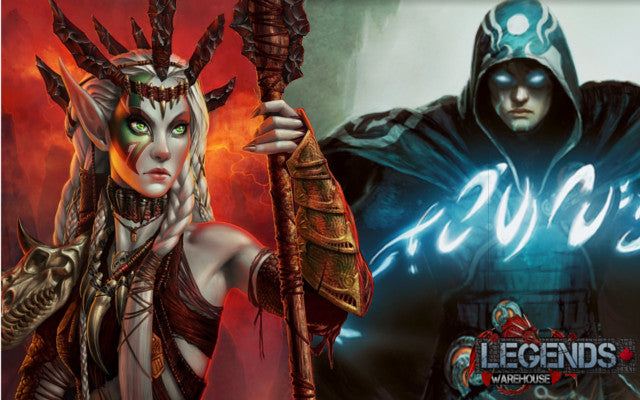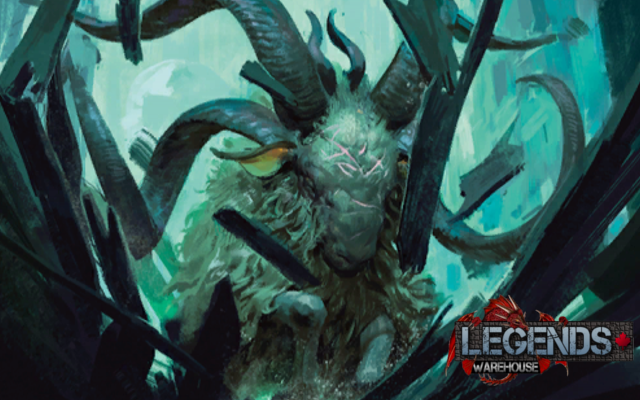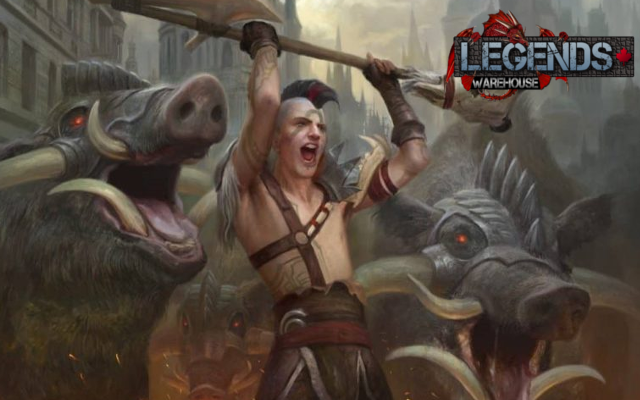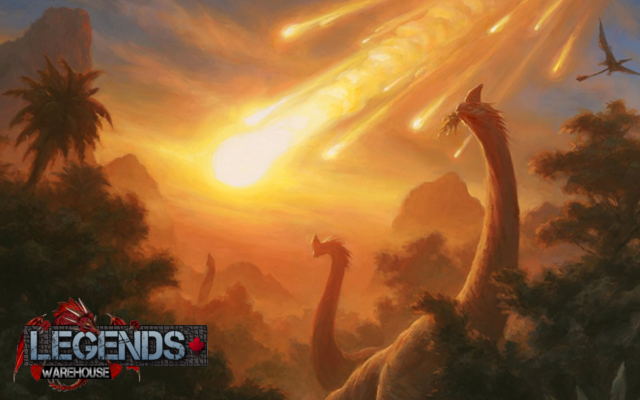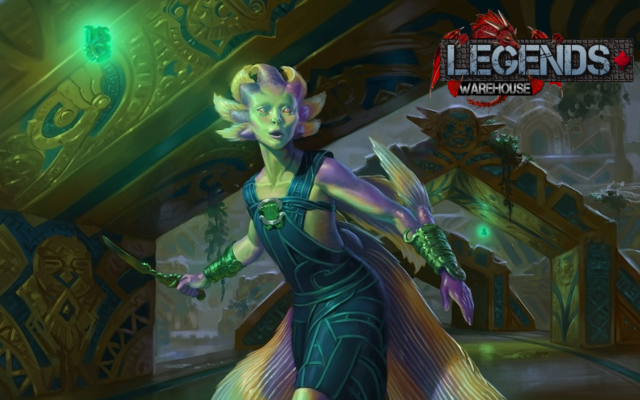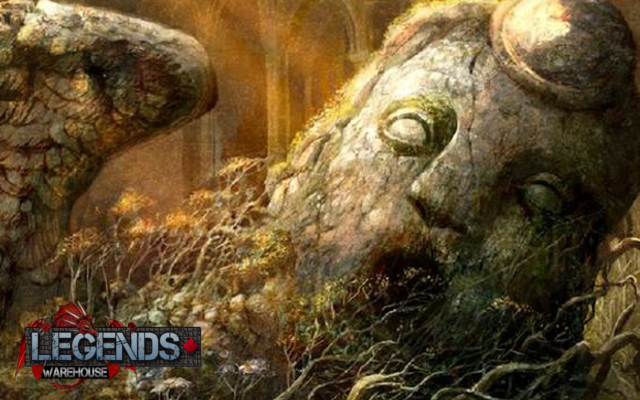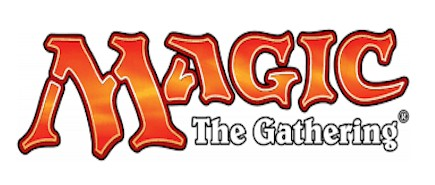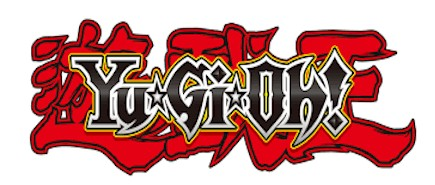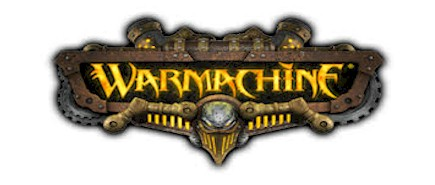Understanding the Modern Unbans
- Legends Warehouse News
- 15 Feb, 2018
Now that Jace, the Mind Sculptor and Bloodbraid Elf are off the banlist, it’s time to figure out just how powerful they’ll be in the current metagame. These two monstrosities have battled each other in Standard and Legacy, but these two have never been legal in Modern at the same time. In fact, while Bloodbraid Elf had its time in the spotlight back when Deathrite Shaman Jund was the top tier, Jace, the Mind Sculptor has never been Modern legal up until now. There is a precedent for just how strong Bloodbraid Elf can be if left unchecked, but Jace? Jace is a wild card that has everyone either up in arms or salivating over the sheer value he brings to the table. So where do these two fit in given the state of Modern? Surely in a format this open it won’t warp things too badly....right?
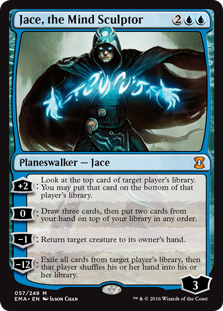

Bloodbraid Elf’s applications have are slightly limited in the sense that while you are getting a ton of value by getting effectively two spells for the price of one, you have to build your deck in a specific way to get that value. You can’t just toss Bloodbraid into a deck like Valakut and call it a day because everything you cascade into would be ramp spells, and at that rate the Bloodbraid slots should just be more ramp. Where Bloodbraid Elf really shines is in a grinding midrange 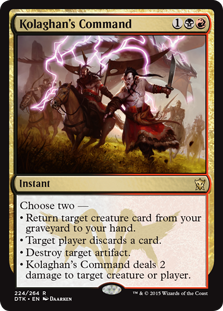 deck where interaction is the name of the game. Before it was banned, that deck was Jund, and while we don’t have its best friend Deathrite Shaman, it makes sense that Jund decks would try to reintegrate Bloodbraid Elf and regain some of its former glory.
deck where interaction is the name of the game. Before it was banned, that deck was Jund, and while we don’t have its best friend Deathrite Shaman, it makes sense that Jund decks would try to reintegrate Bloodbraid Elf and regain some of its former glory.
By adding Bloodbraid Elf, Jund will most likely have to cut back on the higher-mana finishers that were, frankly, just holding Bloodbraid’s place in the meantime. Huntmaster of the Fells, Olivia Voldaren, and even Kalitas, Traitor of Ghet all pale in comparison to Bloodbraid Elf’s might, and even Chandra, Torch of Defiance will most likely be relegated to Bloodbraid’s support card. Furthermore, the nature of Jund’s threats will most likely have to change as well. The added haste and the free spells give the deck a much more aggressive stance, so beatsticks like Grim Flayer and Goblin Rabblemaster will add a considerable amount of pressure, and can each be cascaded into. Even the removal package will have to be tweaked, but in doing so it becomes immensely dangerous to deal with. Newer modal spells like Kolaghan’s Command and Collective Brutality are particularly dangerous due to their flexibility, and they can even abuse the classic line of Bloodbraid Elf into Liliana of the Veil that was the bane of the Modern of yesteryear.
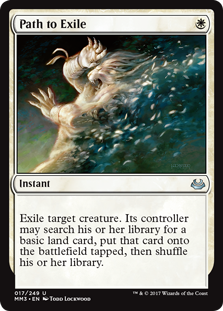
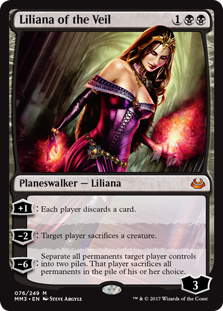
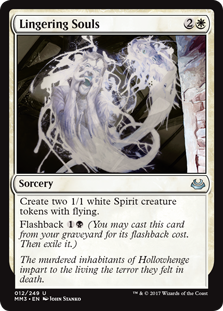
Jund getting a boost also increases the likeliness of 4c Jund to rear its head once more, as it was an evolution of the archetype that was better suited for combating the mirror match. This build opted to include Path to Exile and Lingering Souls to better stand up against Tarmogoyf and Liliana. While this was aided by Deathrite Shaman to accelerate and colour fix for you, given the current state of Modern manabases it’s still a simple task to splash a fourth colour and hit them consistently on curve. This is the deck I expect to see the most of should history repeat itself and traditional Jund becomes a dominant archetype, as this small splash was designed to shore up and prey on your Jund matchups.
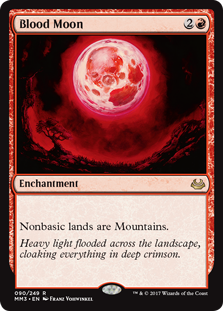
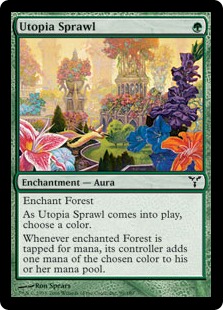
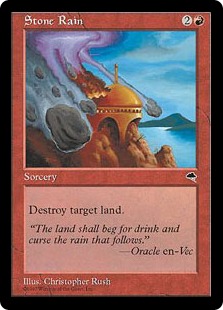
The third deck that will most likely get a boost from Bloodbraid Elf is GR Land Destruction, colloquially known as Ponza. This deck looks to use turn 1 mana acceleration to fire off Blood Moon and Stone Rain as early as turn 2 to keep their opponents on the backfoot for the duration of the game. Conveniently enough, both of these cards can be cascaded into with Bloodbraid Elf, so while this does hurt the deck in the sense that it makes it easier to move its win conditions to the bottom of the deck since they typically range in the 5+ mana costs, Ponza is capable of casting Bloodbraid Elf as early as turn 2 with Utopia Sprawl and Arbor Elf, so it can start digging for those 3-drop land hate spells in case you don’t have any in hand. This also gives Ponza a way to pressure slower opponents that they previously lacked. Instead of relying on slower 4-drops like Huntmaster of the Fells, the addition of Bloodbraid Elf gives the deck some much needed haste to pick off planeswalkers.
Jace, the Mind Sculptor has often been the bane of fair Magic since its debut in 2010, being banned in Standard and never being allowed in Modern up until now. While there is no precedent for whether or not it’ll dominate Modern like Bloodbraid Elf, Modern players all over have been chomping at the bit to try it out. Jace creates a test for threats where if you can’t get any value out of a midrange creature before being bounced by Jace, it’s not really worth playing. It’s why despite everything it had going for it in Standard, Phyrexian Obliterator saw little play. It just couldn’t stay in play to actually do anything and was eventually passed over in favour of creatures with enter the battlefield abilities or haste. After some theorycrafting, there are three decks I’m expecting to see truly breaking Jace.
Traditional UW Control decks have been lacking a consistent value engine to really bring them over the top, and that’s why they’ve fallen out of favour lately. These decks move at a glacial pace and tend to be more reactive than proactive,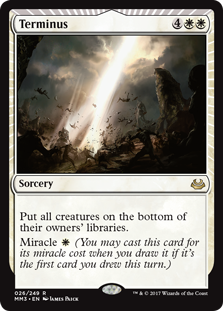 so it’s easy to fall behind. With Jace, the Mind Sculptor, these decks get access to Brainstorm every turn to keep their hand stocked with answers, and when the time is right, they can go on the offensive by fatesealing the opponent’s top card to ensure they never get back in the game. UW Control will definitely see a rise in play from this card because this specific colour pairing gives you access to multiple board wipes like Supreme Verdict, and Jace’s Brainstorm ability can even set up miracles like Terminus and Entreat the Angels to give the deck a reliable win condition. This deck will most likely be the first iteration of Jace decks we see due to it being so analogous to Legacy Miracles, and eventually I can see these decks splashing Red for Lightning Bolt or Black for discard to deal with the mirror match.
so it’s easy to fall behind. With Jace, the Mind Sculptor, these decks get access to Brainstorm every turn to keep their hand stocked with answers, and when the time is right, they can go on the offensive by fatesealing the opponent’s top card to ensure they never get back in the game. UW Control will definitely see a rise in play from this card because this specific colour pairing gives you access to multiple board wipes like Supreme Verdict, and Jace’s Brainstorm ability can even set up miracles like Terminus and Entreat the Angels to give the deck a reliable win condition. This deck will most likely be the first iteration of Jace decks we see due to it being so analogous to Legacy Miracles, and eventually I can see these decks splashing Red for Lightning Bolt or Black for discard to deal with the mirror match.
The second deck I expect to embrace Jace is Blue Moon. This deck centres on locking down the opponent’s mana with Blood Moon, then steadily grinding them out with Snapcaster Mage, Vendilion Clique, and burn spells. What makes this such a good shell for Jace is that Blood Moon curves perfectly into your planeswalker and keeps your opponent from being able to cast anything to actually stop you. With Blood Moon in play it’s a simple task to keep ticking up Jace to prevent your opponent from drawing anything to interact with you, be it a basic land or a burn spell, and then exile their deck with his ultimate. It’s a slow, agonizing death that falls right into Blue Moon’s wheelhouse, and while you do run the risk of “Brainstorm locking” yourself by not being able to shuffle away bad cards with fetchlands, but having such an oppressive lock down is well worth it.
Finally, harkening back to one of the first Standard Jace decks, Mythic Conscription, I can see a Bant midrange deck coming out of the woodwork to really abuse Jace’s capacity as a tempo card. In a Bant shell you can ramp a turn 1 mana dork into a turn 3 Jace and start pressuring your opponents with the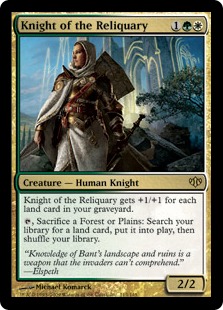 sheer card advantage of starting with Jace a turn earlier than them. As well, going Bant gives you powerhouse beaters like Knight of the Reliquary and Loxodon Smiter that you can curve into your Jace and attack early on. This style of deck would be able to pressure their opponents on multiple fronts through large attackers on the board and disrupting what they draw through Jace’s fateseal ability, making it doubly difficult to fight. Ultimately I think this would be the build best suited for handling Jace mirrors due to the added acceleration of mana dorks, and the size of its threats would be able to stave off a lot of creatures in the Bloodbraid Elf decks, so you’d have the best of both worlds. Where this would fail is that due to the number of slots devoted to creatures, there wouldn’t be as much room for cantrips and removal, which hinders some of its flexibility, but ultimately I think the added tempo boost makes up for this.
sheer card advantage of starting with Jace a turn earlier than them. As well, going Bant gives you powerhouse beaters like Knight of the Reliquary and Loxodon Smiter that you can curve into your Jace and attack early on. This style of deck would be able to pressure their opponents on multiple fronts through large attackers on the board and disrupting what they draw through Jace’s fateseal ability, making it doubly difficult to fight. Ultimately I think this would be the build best suited for handling Jace mirrors due to the added acceleration of mana dorks, and the size of its threats would be able to stave off a lot of creatures in the Bloodbraid Elf decks, so you’d have the best of both worlds. Where this would fail is that due to the number of slots devoted to creatures, there wouldn’t be as much room for cantrips and removal, which hinders some of its flexibility, but ultimately I think the added tempo boost makes up for this.
Only time will tell if unbanning Bloodbraid Elf and Jace, the Mind Sculptor was the right thing to do, but for the time being it’s important to be prepared for the decks that will come out of this development. From the Jund value engines looking to abuse Bloodbraid’s cascade ability to the torturous control shells drooling over Jace’s card advantage, Modern is in for a wild ride. Each of these cards has the power to cement itself as a dominant archetype, and while I dread Modern devolving into a two-deck format, I'm hopeful that Modern’s diversity will at least attempt to keep these two behemoths in check.


